Did you ever think about being water independent and reduce your utility costs at the same time?
Let’s look at 10 water systems that ensure there is plenty of freshwater for anything you might need on your property.
Rain Barrels
A rain barrel can easily be set up on your property and provide a good supply of clean water. Use a 50-gallon plastic trash can with a lid, landscape fabric, a ¾” garden spigot, a double-threaded bulkhead fitting with an internal thread size of ¾”, Gorilla and Teflon tape, a pen, and a razor blade.
Procedure:
- Trace a hole around the spigot bulkhead near the bottom of the trash can, then cut it out.
- Insert the bulkhead and screw the nut on.
- Wrap Teflon tape around the spigot a few times; screw the spigot into the bulkhead until it is tight and facing down.
- Cut a wide hole in the lid of the trash can.
- Pull the landscape fabric tightly over the top of the can; secure with Gorilla tape.
- Place the lid with a hole on top to prevent any insects/debris from contaminating the rainwater.
The rainwater should filter through the fabric and drop down into the barrel.
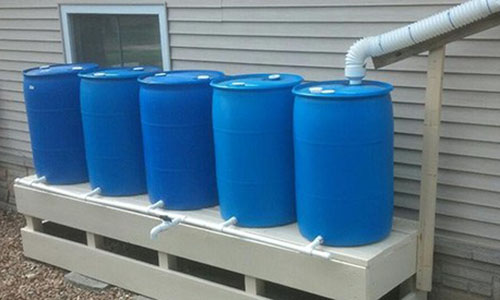
Permaculture Swale
Procedure:
- Study which way the water runs downhill on your property and where it drains when it rains.
- Dig a trench evenly (6”-17” deep, 18”-24” wide) along the contour lines of the flowage to slow down the flow and retain the water.
- Use excess dirt to build a berm along the downhill side of the trench. The water will slow down and drain evenly into the immediate soil.
- Plant trees and deep-rooting plants to stabilize the berm and suck up the moisture from below so the newly-hydrated soil isn’t overly saturated.
Hand Pump
To make a hand pump, you need to drill down into an aquifer.
Then use your arm strength to pump the water up to the surface. Another type of hand pump worth considering is an electric pump.
Related: How To Make A Water Pump In Your Backyard
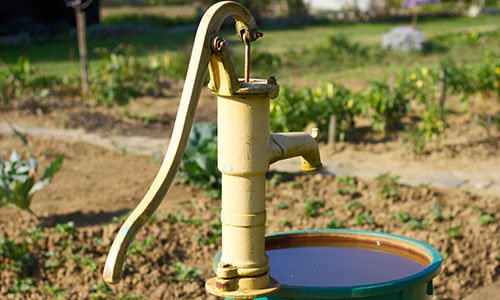
Cistern
To gather a large supply of water (10,000+ gallons), build an underground cistern that runs away from your house.
Procedure:
- Dig a trench (use a shovel or trench digger) and grade it so the water flows downward.
- Pour concrete into the trench and mix.
- Lay 2×4 wood inside the trench at equal distances to prevent the base of the cistern from cracking.
- Lay concrete into the sides of the trench to set the terra cotta tile.
- Finish one side, wait to dry, and complete the opposite side.
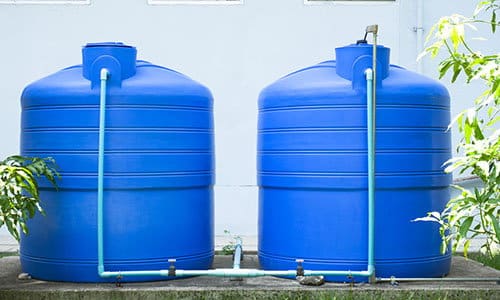
Underground System
Consider making a man-made pond or using a natural pond (8-12’ feet to prevent freezing).
Lining the pond with a tarp and geotextile material reduces the seepage. Filter the water prior to drinking or cooking with it
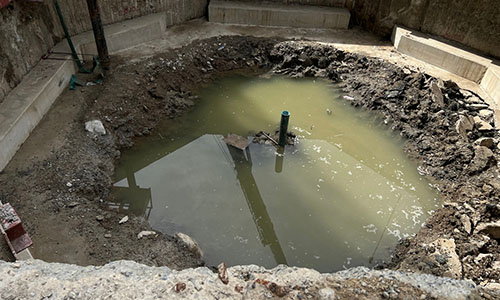
Well
A well provides a clean source of water.
Build it approximately 20-300’ deep so the water doesn’t freeze in the winter. Cost varies depending on the depth and materials of the well.
Related: Are You Ready for a Long-Term Water Emergency?
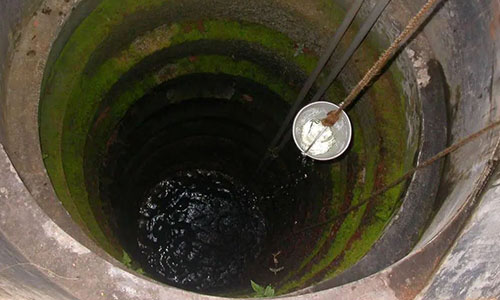
Aqueduct
If your property has a water source uphill from the location you want the water to flow (e.g., ideally 75’ above the receptacle is best), then an aqueduct might be a good choice.
The receptacle can be as simple as plastic storage tanks or a concrete septic tank. Make sure there is an overflow to release excess water.
A pipe needs to be buried beneath the frost line. Cover the point of entry with a screen to prevent contaminants from clogging up the line.
Purify the water before drinking.
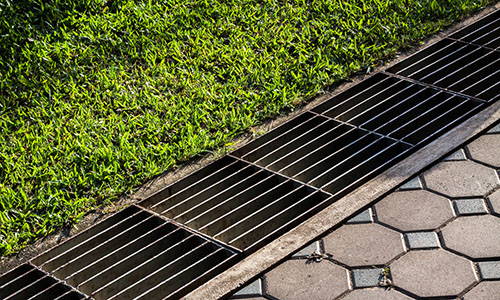
Natural Water Source
Perhaps you have water seeping to the surface naturally. You’ll need to find a way to harness it.
A spring box (approximately 3’ tall, wide, and deep) can be installed to prevent contamination.
Procedure:
- Dig a hole where the water emerges.
- Make the box open at the bottom or back.
- Place a layer of gavel in the bottom to become a naturally filtered-earth holding tank.
- Cover with a removable top to clean easily.
- Test the water; contaminated soil can leak into it.
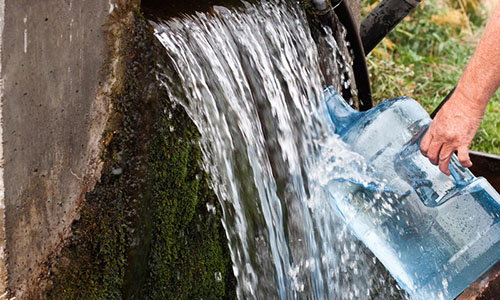
Water Flow or Cascade
With proper water flow, water cascades from one level to the next.
For example, you don’t need clean water to water gardens.
Another example is boiling water for food and then using the water to clean dishes.
Think about other ways you can use and reuse water.
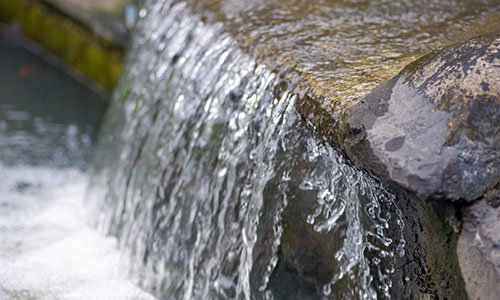
Water Filter
Whether you purchase a water filter or make one, it can serve as a filter for drinking water.
Bio-filters have three separate layers: gravel removes the larger pieces of debris; sand removes smaller particles; activated charcoal removes bacteria and some chemicals.
You’ll also need some food grade five-gallon buckets, some screen, a few plastic plumbing fittings, and a hole saw.
Procedure:
- Stretch fiberglass screen over the fitting that goes on the inside of the bucket.
- Hold it in place with a rubber band/O-ring.
- Cut a hole in the bottom center of the two buckets (e.g., the diameter for the threaded part of the fitting to go through).
- Cut the same size hole in the side of the third bucket, just above the bottom.
- Attach the fittings together with the bottom/side of the bucket between them. The screened side of the fittings should be up.
- Use an O-ring between the fittings to create a seal.
- For the bottom bucket, add a valve, an angled fitting, or a fitting with a flexible tube for the outlet.
- Cut a hole in the center of the lids of two buckets, slightly larger than the fitting.
- Put a cover over the screen.
- Use small plastic cups; drill holes in the sides so water can get through. Glue the cups upside-down over the fitting.
- Rinse the gravel, sand, and activated charcoal and then fill each bucket approximately 2/3 full.
- The charcoal goes in the bottom bucket. Put one of the lids with a hole on top.
- Set the bucket for the sand on top of it; then set the bucket for the gravel on top of this bucket.
- The lid for the top bucket shouldn’t have a hole in it to keep debris out.
You may also like:
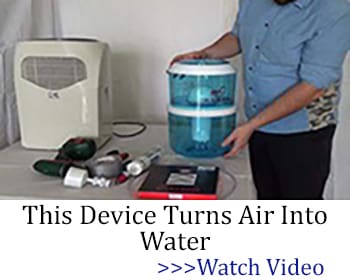 How to Build a Water Purification System in 10 Minutes
How to Build a Water Purification System in 10 Minutes
This Homemade Device Can Power Up Your Entire House 7 Days in a Row (Video)
Rainwater Tank That Irrigates A Small Herb Garden
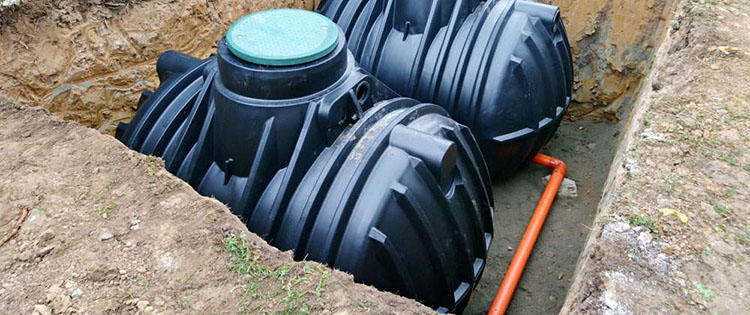

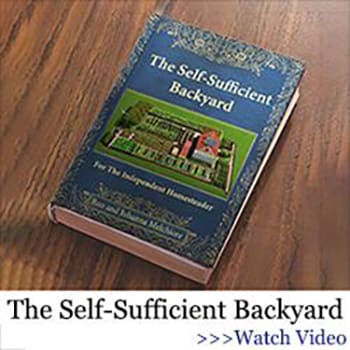





Sounds good but some pricey ND others hard for poor single older woman to get done. But willing to try to save up the money to get supplies ND pay someone for the work to be done. It’s very hard fighting lung cancer esp. Small cell carcinoma ND STD. DISABILITY not wanting to pay on time or at all. It’s so micromanaged. But TY 4 SHARING SOMETHING WORTH SAVING FOR!!!
Of topic a tad but might I suggest cannabis for your lung cancer. Or, 4 Herb Tea?